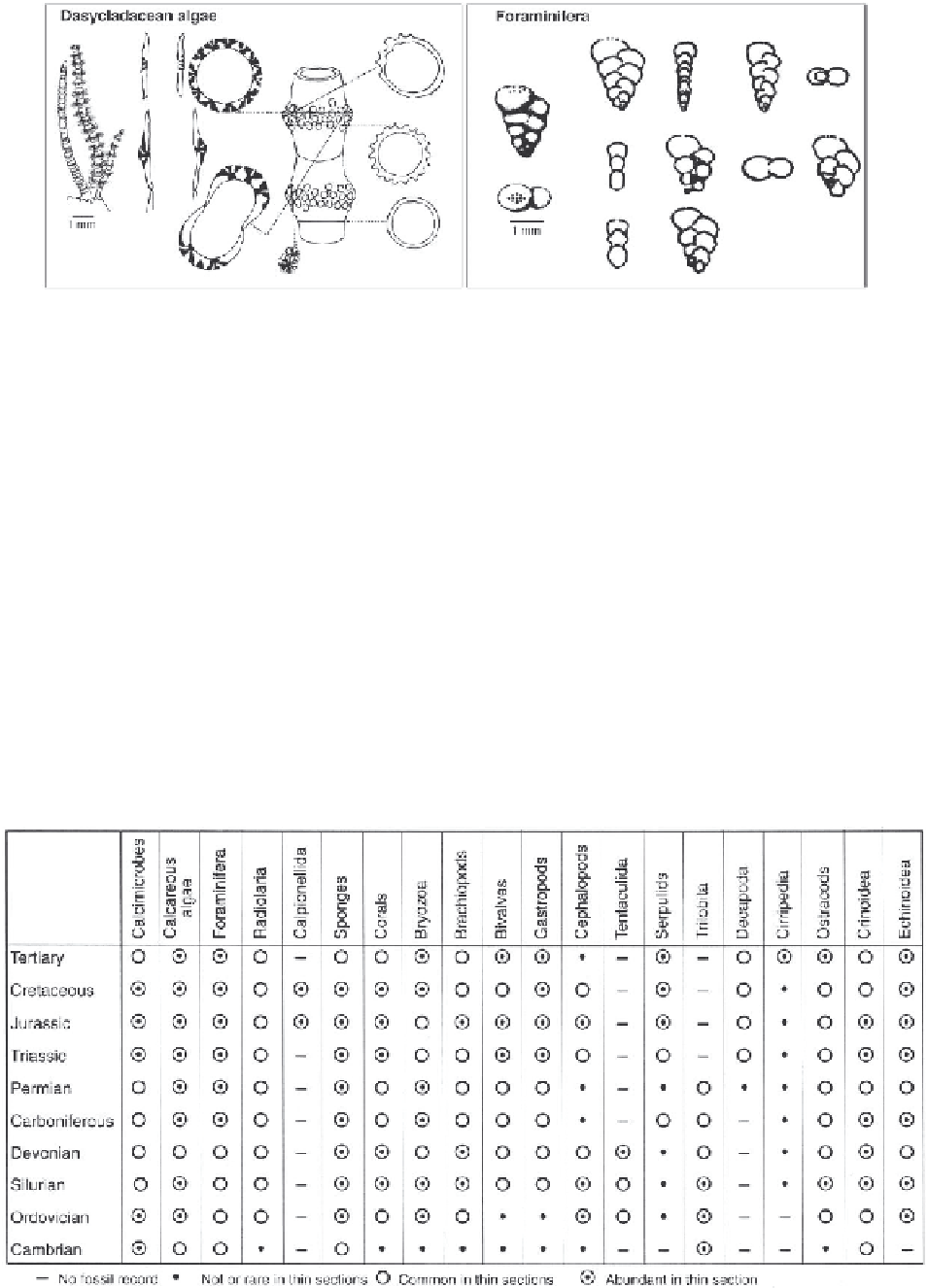Geology Reference
In-Depth Information
A
B
Fig. 10.2.
Cutting effects.
Random cutting of microfossils results in very different figures. Relatively few of these figures
show all the morphological criteria necessary for a determination at low taxonomic levels. Generally a combination of
several figures and oriented sections are needed for generic or specific determinations of thin-section fossils. In contrast,
random cuts can often be assigned to major fossil groups, if additional criteria (e.g. size, microstructure) are considered.
A
: Different sections through the cylindrical calcareous skeleton of the Late Paleozoic dasyclad green alga
Velebitella
(see
Pl. 59/1) produce various figures. The diagnostic taxonomic criteria must be derived from longitudinal, oblique, tangential
and cross sections. Modified from Kochansky-Devidé (1964).
B
: The Late Paleozoic smaller foraminiferal genus
Climacammina
is characterized by a calcareous test whose chambers are biserially arranged in an early stage and uniserially
in the last growth stage. The aperture is cribrate. The figure displays oriented sections which in combination exhibit these
criteria and allow the generic determination of the microfossil. Modified from Cummings (1958).
10.1.3 Practical Advice
spect to bedding planes and geopetal structures (verti-
cal, parallel, oblique).
• Consider the size of the grain. It is imperative to
know the field of view of the microscope at each magni-
fication.
• Evaluate the presence of major fossil groups (e.g.
bivalves, echinoderms, calcareous algae) and decide
which group should be investigated in detail (e.g. cal-
careous algae), because they give indications of paleo-
environmental constraints and the age of the sediment.
The following text summarizes some points which
should be considered looking at fossils in thin sections.
Browsing among thin-section photographs in topics and
microfacies monographs (the penultimate point) is cer-
tainly very tempting, but often misleading.
•
Use various techniques (polarized light, CL staining etc.).
•
Check the orientation of the thin section with re-
Fig. 10.3.
Generalized distribution of the major fossil groups
occurring in thin sections of Phanerozoic limestones.

